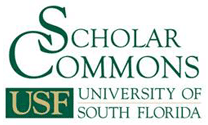Home > Open Access Journals > JSS > Vol. 16 > No. 4 (2023)
Author Biography
Annie Sundelson* is a PhD candidate at the Johns Hopkins Bloomberg School of Public Health in the Department of Environmental Health and Engineering.
Marc Trotochaud* contributed to this manuscript as a Senior Analyst at the Johns Hopkins Center for Health Security.
Noelle Huhn contributed to this manuscript as an Analyst at the Johns Hopkins Center for Health Security.
Tara Kirk Sell is an Associate Professor in the Department of Environmental Health and Engineering at the Johns Hopkins Bloomberg School of Public Health and a Senior Scholar at the Johns Hopkins Center for Health Security.
*Annie Sundelson and Marc Trotochaud contributed equally to the development of this research and manuscript.
DOI
https://doi.org/10.5038/1944-0472.16.4.2148
Subject Area Keywords
Health security, Information operations, International security, Russia, Weapons of mass destruction
Abstract
Soon after the Russian invasion of Ukraine, narratives about U.S.-funded biological weapons laboratories in Ukraine began circulating in both Russian and U.S. news. We sought to characterize news media coverage of this topic and to understand potential differences in coverage between different news sources. 401 news media items from Russian and U.S. news sources covering Ukrainian biological laboratories between February 24 and March 24, 2022 were analyzed for content and framing tactics based on theories of risk perception, persuasion, and misinformation/disinformation. Results showed strong differences between U.S. mainstream news coverage and Russian news coverage and similarities between U.S. hyper-partisan right (HPR) news coverage and Russian news coverage. Differences between U.S. HPR and Russian coverage of the topic were also found. Findings indicate that the U.S. HPR media ecosystem serves as an important amplifier of Russian strategic narratives about U.S. cooperative biological research. Moreover, findings suggest that U.S. HPR news sources have become sophisticated purveyors of false information, capable of applying the Russian “firehose of falsehoods” model more forcefully than Russians themselves.
Acknowledgements
The authors would like to acknowledge Divya Hosangadi and Arielle DeSouza for their initial involvement in the development of this research idea and data collection.
Recommended Citation
Sundelson, Annie E.; Trotochaud, Marc; Huhn, Noelle; and Sell, Tara Kirk. "Russian and U.S. News Media Coverage of Ukrainian Biological Laboratories, February – March 2022." Journal of Strategic Security 16, no. 4 (2023)
: 57-73.
DOI: https://doi.org/10.5038/1944-0472.16.4.2148
Available at:
https://digitalcommons.usf.edu/jss/vol16/iss4/4

